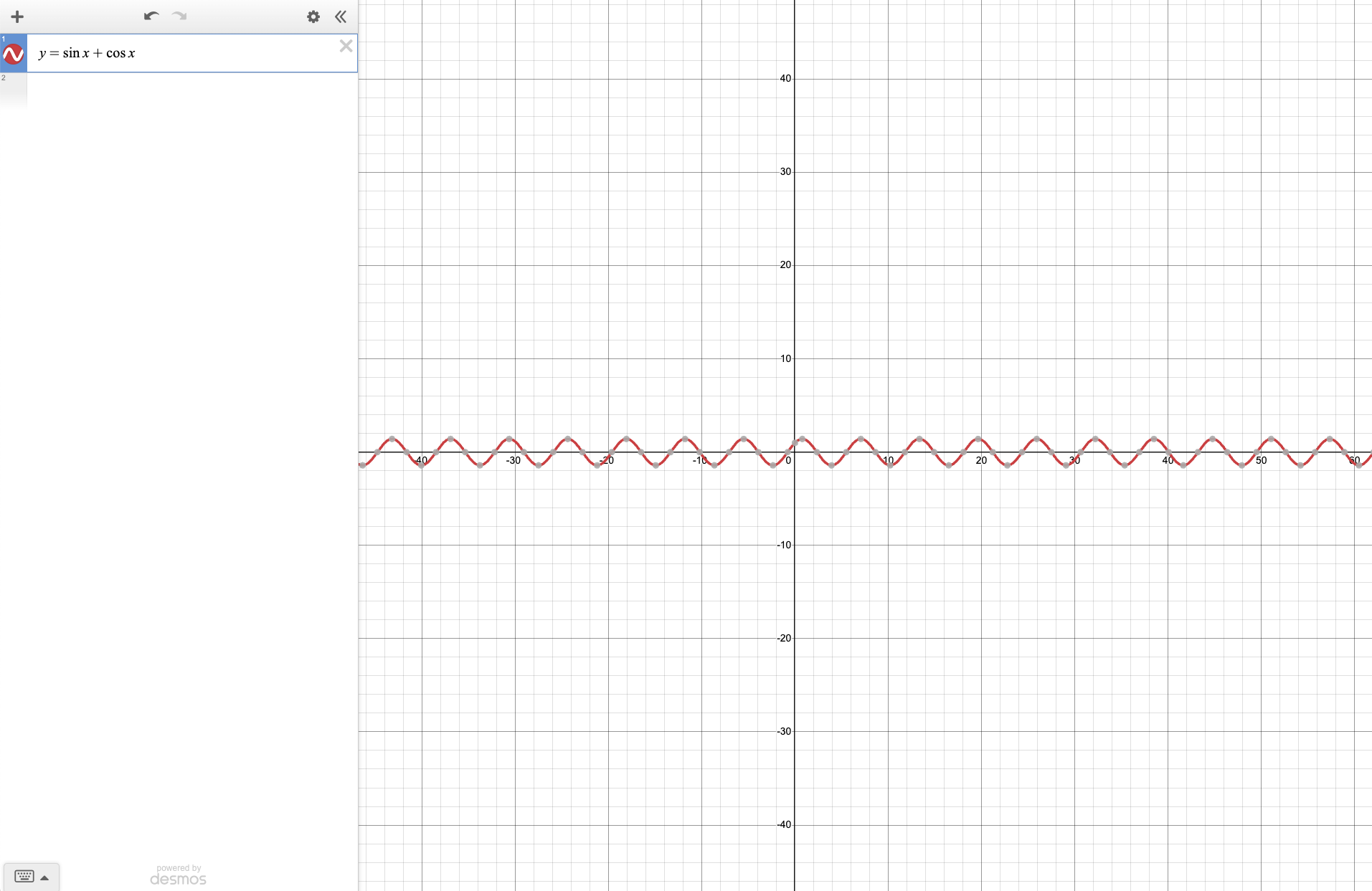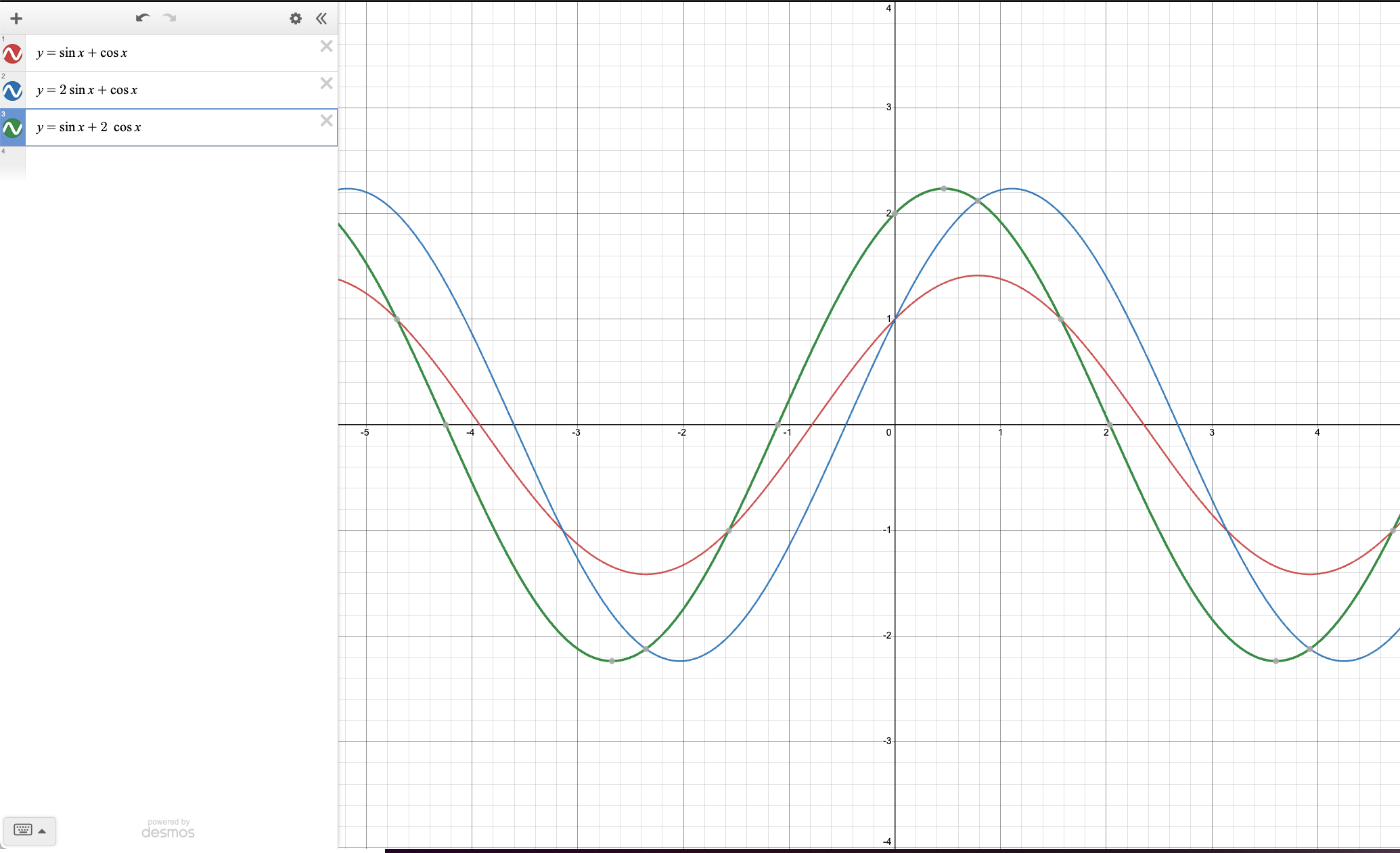DA1. The Maximum value of a function¶
Statement¶
In many areas of science, engineering, and mathematics, it is useful to know the maximum value a function can obtain, even if we don’t know its exact value at a given instant. For example, if we have a function describing the strength of a roof beam, we would want to know the maximum weight the beam can support without breaking. If we have a function that describes the speed of a train, we would want to know its maximum speed before it jumps off the rails. Safe design often depends on knowing maximum values. This project describes a simple example of a function with a maximum value that depends on two-equation coefficients. We will see that maximum values can depend on several factors other than the independent variable x.
- Consider the graph of the function y = sin x + cos x. Describe its overall shape. Is it periodic? How do you know?
- Using a graphing calculator or other graphing device, estimate the x- and y-values of the maximum point for the graph (the first such point where x > 0). It may be helpful to express the x-value as a multiple of π.
- Now consider other graphs of the form y = A sin x + B cos x for various values of A and B. Sketch the graph when A = 2 and B = 1, and, find the x - and y-values for the maximum point. (Remember to express the x-value as a multiple of π, if possible.) Has it moved?
- Repeat and sketch the graph for A = 1, B = 2. Is there any relationship to what you found in part (2)?
- Explain what you have discovered from completing this activity using details and examples.
Solution¶
Question 1¶
The \(sin\) and \(cos\) functions are periodic, as we know that it represents the state of trigonometric circle. The period of the function is \(2\pi\), that is, \(360^{\circ}\).
After \(2\pi\), the function repeats itself from 0 (\(2\pi\)) till \(4\pi\) (\(720^{\circ}\)) where a full cycle is completed, and a new cycle starts till infinity.
Question 2¶
- The graph below shows the periodic nature of the function \(sin(x) + cos(x)\) where the max point is \((\frac{3\pi}{4}, sin(\frac{\pi}{4}) + cos(\frac{\pi}{4}))\) and the min point is \((\frac{7\pi}{4}, sin(\frac{-3\pi}{4}) + cos(\frac{-3\pi}{4}))\) in the first cycle.

Question 3 And 4¶
The graph below shows three functions,
- \(sin(x) + cos(x)\) represented by the red line.
- \(2sin(x) + cos(x)\) represented by the blue line.
- \(sin(x) + 2cos(x)\) represented by the green line.
We notice the following:
- Max and min points are shifted vertically by the factor of \(A\) and \(B\) (their values are amplified by the factor of both \(A\) and \(B\)).
- The \(x\) value of the max and min points are also shifted accordingly, if we increase A (sin), the \(x\) of both min and max will shift right, if we increase B (cos), the \(x\) of both min and max will shift left.

Question 5¶
The standard periodic function of \(A sin(x) + B cos(x)\) where \(A\) and \(B\) are constants equals 1. Any change in the value of \(A\) and \(B\) will change the amplitude of the function, and the max and min points will be shifted vertically by the factor of \(A\) and \(B\). Also the \(x\) value of the max and min points are also shifted accordingly (left or right).